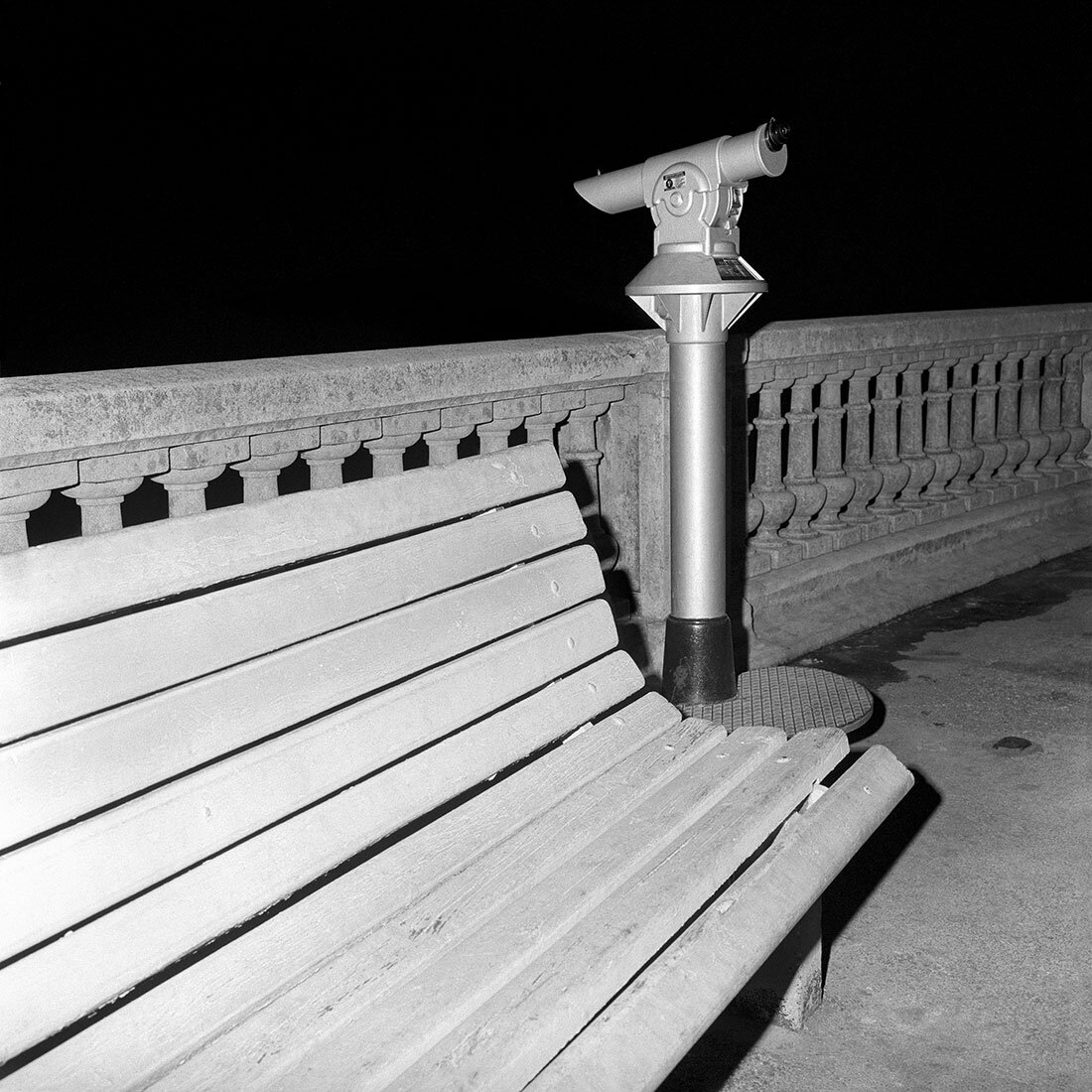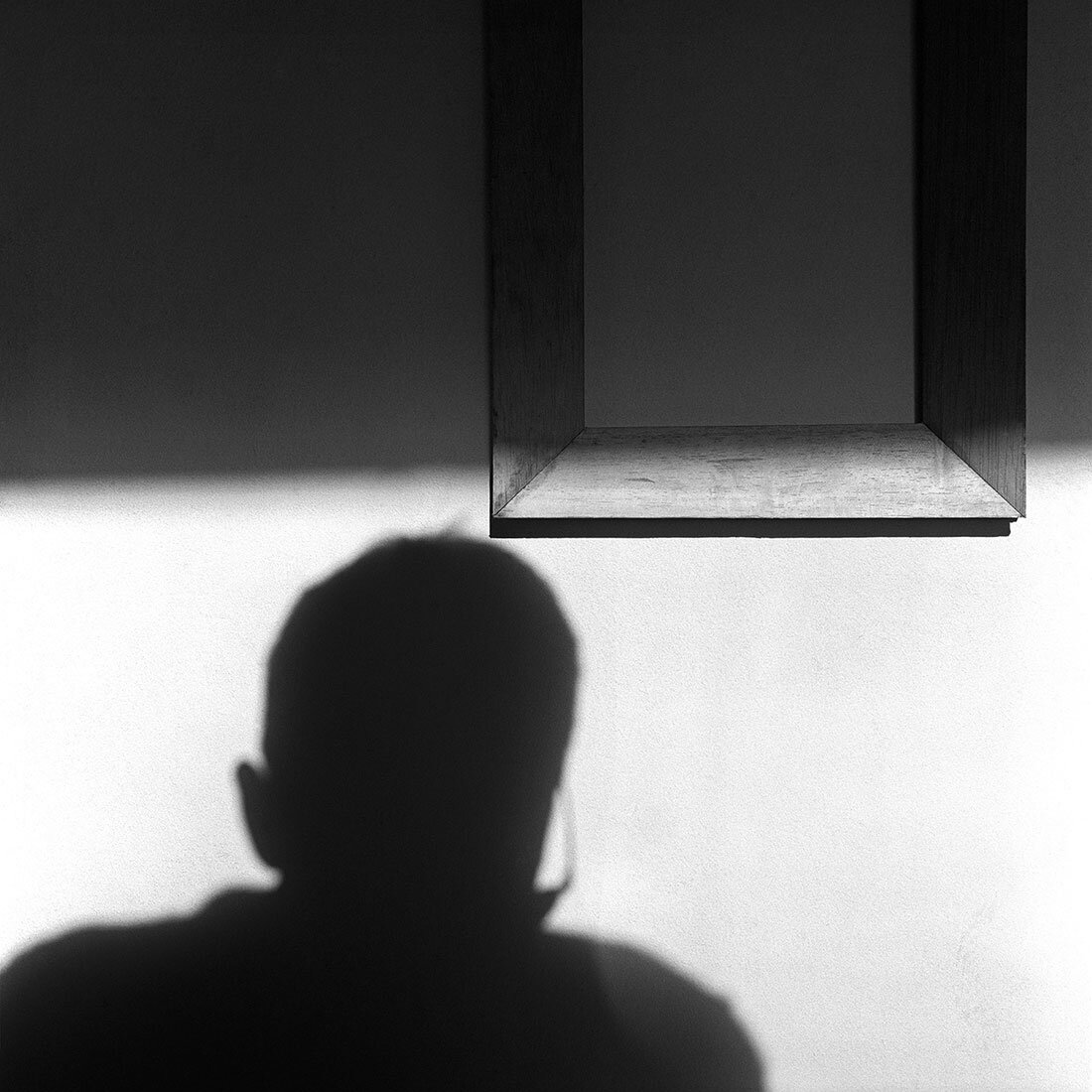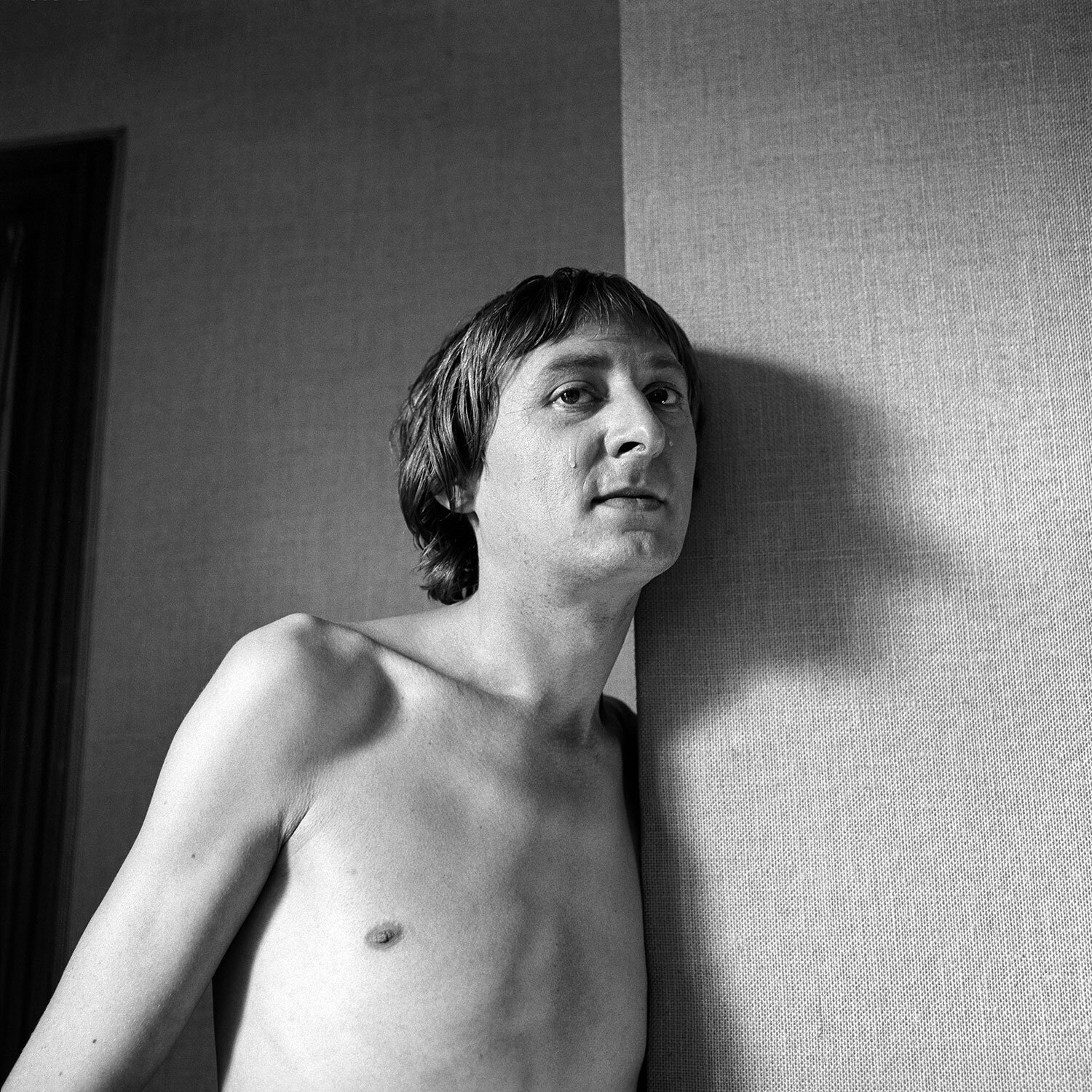Points de vue (1968-1969)








Points de vue
Extraits de la série : 1969-1970
Grâce à la bourse de la Fondation de la Vocation obtenue en 1969, Alain Sabatier achète un Rolleiflex qui lui ouvre de nouveaux sujets d’expérimentation. Il effectue alors le chemin inverse de beaucoup de photographes des générations précédentes en abordant le noir et blanc après la couleur.
La visée spécifique de cet appareil - dans lequel l’image carrée est observée et mise à distance sur un verre dépoli - le conduit à s’intéresser à la manière dont se « fabrique » l’image photographique. C’est ainsi qu’il va progressivement en explorer les différentes composantes.
Jusqu’alors plutôt attiré par la peinture contemporaine, il se tourne vers la Renaissance italienne. Il prend conscience de la prégnance de la perspective, de l’émergence du portrait et, au théâtre, de la scène d’illusion qui hiérarchise les espaces à partir d’un point fixe déterminé mathématiquement. Ce point de vue idéal était, à l’origine, destiné au spectateur privilégié qu’était le prince, « jouissant du spectacle dans l’axe exact de la perspective ».
Avec le noir et blanc, Alain Sabatier s’éloigne progressivement de son travail sur l’image projetée et s’intéresse aux conditions d’existence de la photographie sur support papier.
Points de vue nous livre un work in progress interrogeant la pratique culturelle qui conduit au geste de placer une image sur le mur.
Acquisitions
Collections particulières
Alain Sabatier used the Fondation de la Vocation grant awarded to him in 1969 to buy a Rolleiflex, which gave him access to new research topics. He then set out in the opposite direction from many photographers from the preceding generations by tackling black and white after working with color.
That camera’s specific viewfinder – which enables the square image to be observed and placed at a distance on a matt screen – triggered an interest in the way the photographic image is “put together.” From there, he gradually explored its different components.
Until then he had been drawn more to modern art, but he now turned his attention to the Italian Renaissance. He became aware of the importance of perspective, the growing significance of portrait painting and the theatrical illusion created by stage sets that establish spatial priorities from a set point that is determined mathematically. That ideal viewpoint was originally reserved for the privileged member of the audience, the prince, who could “enjoy the performance straight down the line of perspective.”
By working in black and white, Alain Sabatier progressively moved away from his studies in projected images and explored the conditions determining the existence of photographs printed on paper.
Points de vue (viewpoints) is a work in progress that raises questions about the cultural practice that destines pictures to be hung on a wall.
Autoportrait, 1970 © Alain Sabatier / adagp
